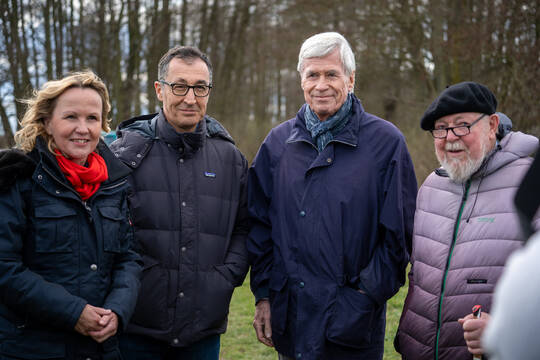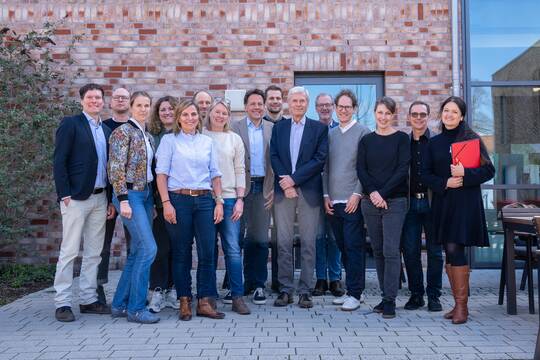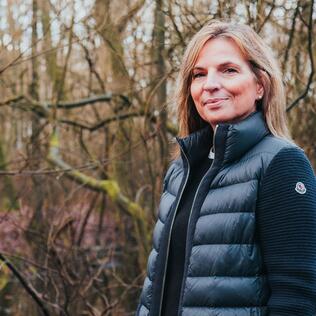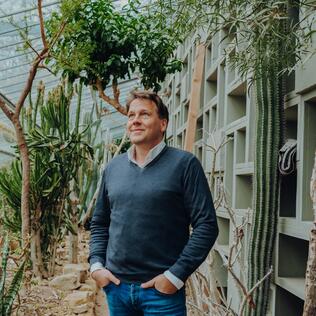"Peatlands must be wet!“ – Ground-breaking ceremony in German region Uckermark sets a sign for climate protection

The symbolic ground-breaking ceremony in the Sernitz peatland near Angermünde in Brandenburg, Germany, marks the start of an important pilot project for the rewetting of peatlands. It was launched by the Michael Otto Foundation for Environmental Protection and the Michael Succow Foundation, partner in the Greifswald Mire Centre, and is part of the toMOORow initiative. This initiative is committed to the rewetting and sustainable use of peatlands, thus connecting ecology with economy. The Otto Group has been supporting the climate protection initiative for four years now. Politics has also recognized the potential of peatlands for climate protection: In 2021, the federal and state governments agreed on specific targets for peatland protection, and in 2022, the National Peatland Protection Strategy was adopted.
At the ceremonial kick-off on April 1st, alongside the foundations’ founders Prof. Dr. Michael Otto and Prof. em. Dr. Michael Succow, the two federal ministers Steffi Lemke and Cem Özdemir were also present.
From climate killer to climate protector
Peatlands are essential ecosystems for global climate protection. Although they only cover three percent of the global land area, they store twice as much carbon as all of the world's forests combined – but only when they are wet. When drained, they emit large amounts of greenhouse gases. In Germany, around 95 percent of peatlands have been drained, partly for agricultural use, contributing to about seven percent of the country's total annual greenhouse gas emissions. The lighthouse project in the Sernitz peatland is now set to demonstrate on an area of 80 hectares that the rewetting of peatlands can go hand in hand with sustainable land use - known as paludiculture.
In her speech, the acting Federal Minister for the Environment, Steffi Lemke, spoke of a day that spreads optimism, especially in these times. "Projects like this show how we can combine climate protection, nature conservation, and economic perspectives," said Lemke. Many people have now realized that peatlands are the best allies in the fight against the climate crisis. She expressed confidence that the future German government would continue to support natural climate protection due to legal obligations. Cem Özdemir, acting Federal Minister of Agriculture, emphasized that the protection of peatlands and sustainable agriculture must be considered together: "With paludiculture, we are creating land use that is sustainable in the long term while also protecting the climate."
Excavators in the peatland for increased climate protection
However, before this can happen, some preparatory measures are necessary on the currently dry peat soil, for example filling in drainage ditches and constructing small bunds. These measures help retain water in the landscape, reduce greenhouse gas emissions by up to 1,200 tons of CO₂ equivalents per year, and enable the re-establishment of typical peatland plant and animal species. Now that the approval for the construction work has been granted, the excavators are ready to start work after the end of the breeding season.

Prof. Dr. Michael Otto, Chairman of the Board of Trustees of the Michael Otto Foundation for Environmental Protection and Honorary Chairman of the Supervisory Board of the Otto Group, on the importance of the project: "Today's ground-breaking ceremony in the Sernitz peatland is another example that the combination of peatland protection and agricultural use is a promising path. Now we need to scale this up and set the course in politics and agriculture to ensure that as much peatland as possible is rewetted quickly, and that the biomass generated there can be used as a renewable regional resource by our local economy."
The ground-breaking ceremony in the Sernitz peatland is another example that the combination of peatland protection and agricultural use is a promising path.
Dr. Otto further emphasized that Germany's climate goal of rewetting 50,000 hectares of drained peatlands annually by 2045 could only be achieved with the continued support of the new German government and the acceleration of approval processes.
Prof. Dr. em. Michael Succow, winner of the Alternative Nobel Prize and founder of the Michael Succow Foundation, adds: “We have come to understand that peatlands must be allowed to grow again so they can accumulate CO₂ in the form of peat, retain pollutants, and serve as large evaporation areas that cool our increasingly heated planet. This project is not just about nature conservation, but about our future viability!”
This project is not just about nature conservation, but about our future viability!
Pioneering work: A model for the future
In addition to the ecological benefits, rewetting also offers economic opportunities. "The transition to agricultural or forestry use of wet peatlands enables companies to access renewable, regional raw materials that can ideally replace fossil and mineral resources or reduce the consumption of other renewable biomass such as wood – for example, in the production of packaging materials, building/insulation materials, and even furniture," explains Claudia Bühler, Director of the Michael Otto Foundation for Environmental Protection. The goal is to establish a nature-based solution against the climate crisis and biodiversity loss that can simultaneously help the economy and agriculture with their challenges. "If we succeed in establishing products from paludiculture in the market and thus offer a sustainable business model for agriculture, it could be an important lever for climate protection," Claudia Bühler is convinced. However, this requires not only support from politics and the willingness to change in agriculture, but also strong partners from the business sector.
If we succeed in establishing products from paludiculture in the market and thus offer a sustainable business model for agriculture, it could be an important lever for climate protection.
They came together almost exactly a year ago in the "Allianz der Pioniere“ a coalition of strong and determined business partners committed to climate and species protection through their spirit of innovation and entrepreneurship. They actively participate in the valorization of paludiculture biomass through pilot projects. The goal is to develop and scale up high-performance products.

Last year, the Group subsidiary OTTO produced 100,000 shipping cartons containing 10 percent Paludi biomass from wet meadow grasses such as sedges and rushes and tested them with customers. Initial results show that the new packaging can be easily integrated into logistics processes. By 2028, all OTTO shipping cartons are expected to contain the highest possible proportion of Paludi biomass in order to incentivize farmers to rewet drained peatlands, among other things.
Photos: Lucas Treise / BioFilm / Michael Succow Stiftung und Otto Group































